Artists
In Their Most Personal Show Yet, Wynnie Mynerva Explores the Body as Invader and Invaded
"My Weaponised Body," at Gathering in London, may be the artist's most personally revealing and technically challenging exhibition to date.
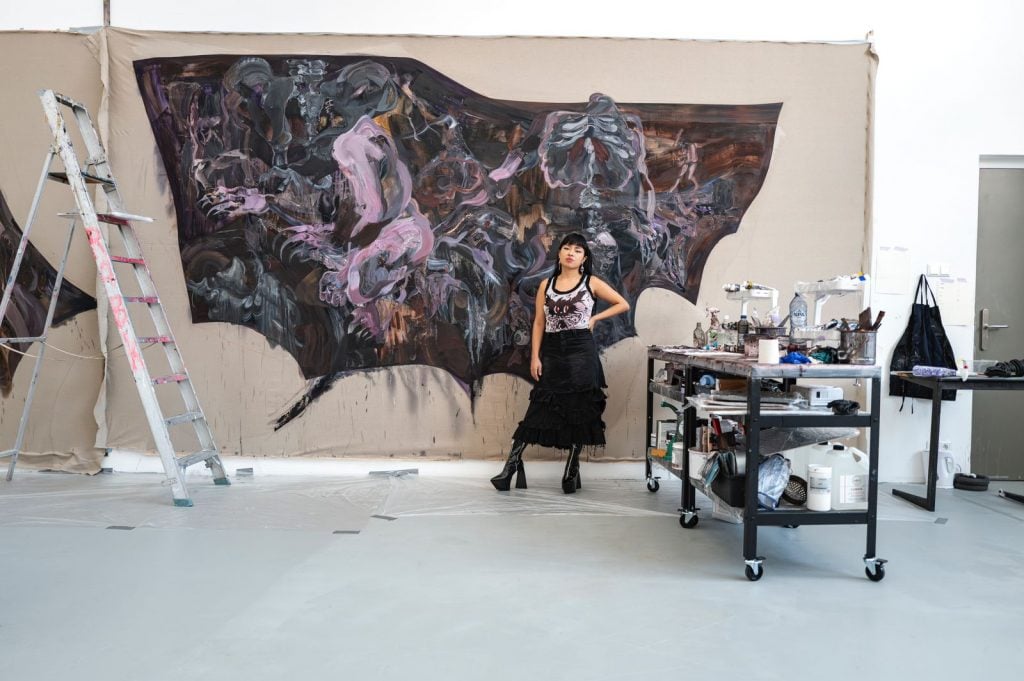
"My Weaponised Body," at Gathering in London, may be the artist's most personally revealing and technically challenging exhibition to date.

Emily Steer

Wynnie Mynerva paints the body as an expressive explosion of flesh and bone. The artist’s vast canvases channel, more than its exact shape, the feeling of the body, using passionate strokes of deep purple, gray, black and pink. Mynerva (who uses they pronouns) obscures the boundary between their own body and the work; for their 2023 exhibition “The Original Riot” at New York’s New Museum, they had their lowest rib, often referred to as “Adam’s rib,” surgically removed, and placed it alongside a painting of Eve gifting her own bone to Lilith, who was banned from the Garden of Eden for defying Adam, in an act of anti-patriarchal alliance (or the original riot).
Now, at London gallery Gathering, the Peruvian artist has opened “My Weaponised Body,” a solo exhibition which challenges deeply rooted narratives surrounding chronic illness.
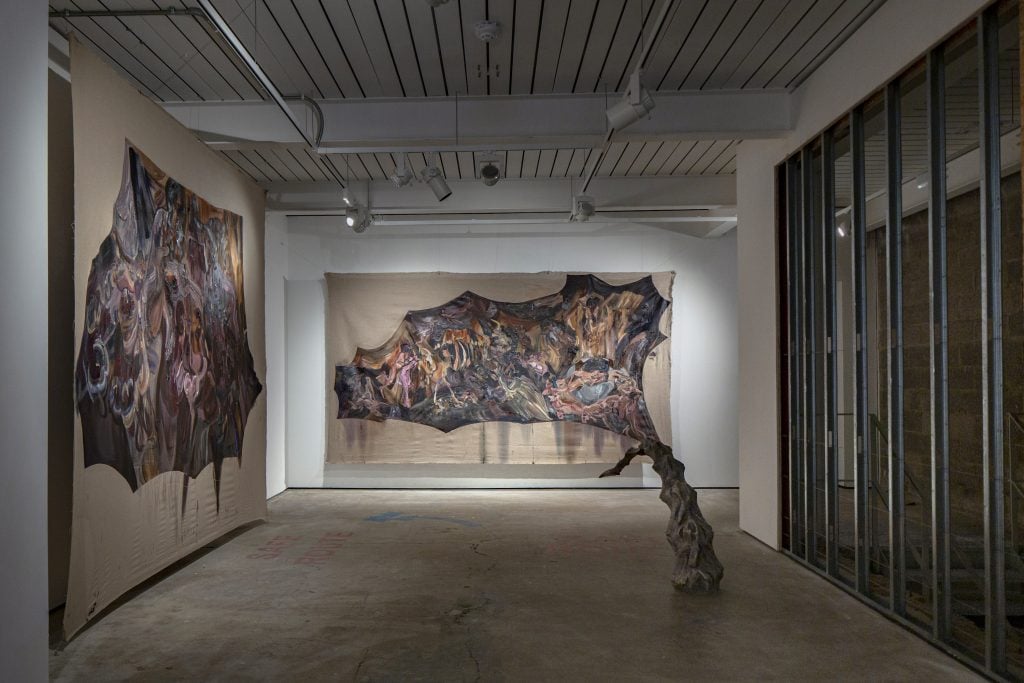
Installation view of “Wynnie Mynerva: My Weaponised Body” at Gathering, London. Photo: Ollie Hammick. Courtesy of Gathering.
While Mynerva has long explored the clichés and stigmas society projects onto the body, especially those which are seen as transgressive or othered, this is perhaps their most personal outing to date. The exhibition follows the artist’s HIV diagnosis.
“What does it mean to be HIV positive? There is no easy or unique answer,” the artist said in an interview. “Having HIV is being sick with meanings, infected with metaphors that society projects onto another person’s body. It is also feeling that an entire system is trying to crush you with shame, guilt and silence.”
The exhibition features both paintings and sculpture. The paintings are on raw, unstretched canvas. Some areas are densely packed with Mynerva’s tangled forms, others left bare. In parts, rich pigment bleeds onto otherwise untouched fabric. The works hang away from the walls, with the occasional corner draping downwards, evoking the appearance of flayed skin. From a distance, sweeping skeletal or fleshy forms and thick areas of gory paint dominate. On closer view these fall away, revealing more intimate details: a pair of bloody kidneys, a leaping human figure, two pert breasts sitting upon a headless, reclining gray torso.
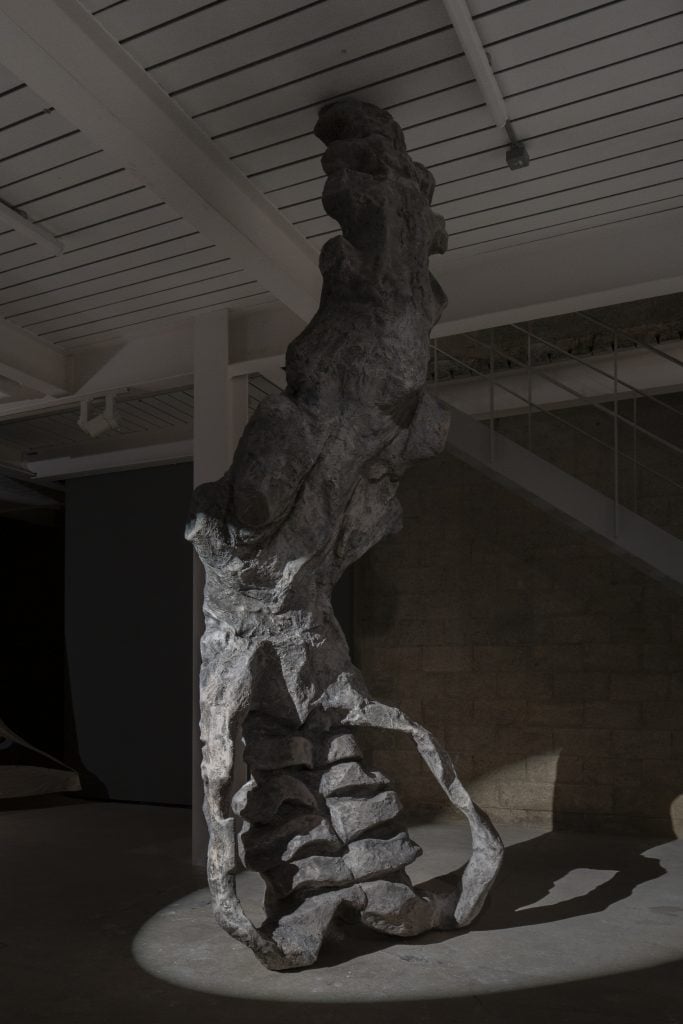
Wynnie Mynerva, Hueso (2024) at Gathering, London. Photo: Blythe Thea Williams. Courtesy of Gathering.
On the ground floor, the top of a sculpture that evokes a spine protrudes upwards. It is organically formed from styrofoam and coated in resin, taking on a similar painterly quality to the canvases. Downstairs, the main body of this beast is revealed: a proudly towering form, stretching from floor to ceiling, that feels both human and alien, phallic and snakelike. This biomorphic shape works well with the surrounding gallery space, which has many of its internal workings exposed, from the raw concrete floor seen in cross-section as visitors walk down the stairs to its industrial beams and columns. All together, the works represent a view from the inside the artist’s body.
Mynerva wants to rethink how we understand disease, seeing it not as an “invading pathogen” but as a “complex ecosystem.”
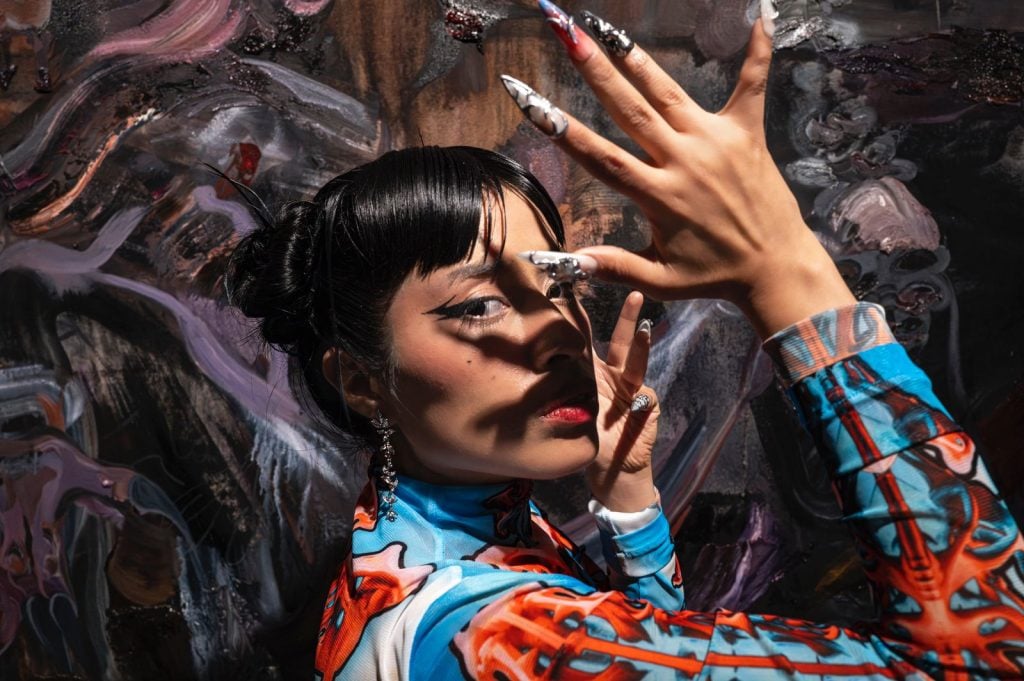
Artist Wynnie Mynerva in their studio. Courtesy of the artist and Gathering.
“The metaphor of the invading pathogen is me,” said the artist. “I carry in my body a virus that for many is the embodiment of terror. For society I am an infectious body, but I am undetectable and untransmittable. Through this experience, I have discovered many other ways of reading life. It is not the body that carries the stigma, but the stigma that constructs the body. This exhibition is made for bodies like mine. I hope to powerfully break that silence and confidently rewrite our stories.”
It was important for Mynerva to embrace uncertainty in this exhibition, and technically, it is their most ambitious yet. This is the first sculpture they have made to this scale, and the oil paintings are formed using a transparent gesso base. This makes the process more challenging, encouraging organic errors, which the artist says has liberated them from their known ways of making.
Their ongoing approach to interiority has also taken on new meaning in this series. “Now that I have undergone different types of tests to check my health, I think much more about my body from the inside. I can imagine its systems, its organs, its fluids,” they said. “In that sense the bodies represented in the paintings are open, showing you their interior. The paintings also go through different phases: guilt, prejudice, desire, change and transmutation.”
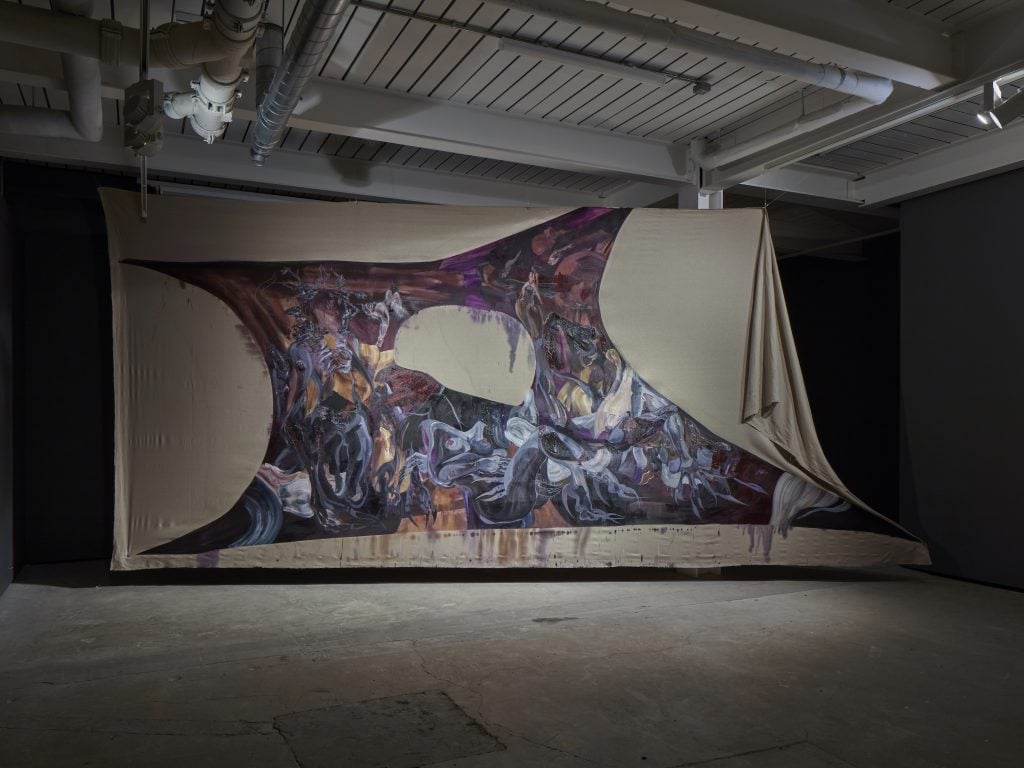
Installation view of “Wynnie Mynerva: My Weaponised Body” at Gathering, London. Pho- tography: Ollie Hammick. Courtesy of Gathering.
If we are to think of the exhibition as representing the insides of the artist’s body, then the viewers become something of an invasive force within it. Mynerva considers that those visiting the show might take on the role of contaminating agents. Reflecting on the writing of Donna Haraway and Paul Preciado, they also see the possibility for integration, the possibility that the boundary between the individual and communal body could become blurred.
“Viruses, by infiltrating and replicating within cells, erase the clear distinction between the ‘internal’ organism and the ‘external’ agent,” she said. “In this sense, viruses are not only a threat to physical integrity, but also symbolize the vulnerability and interconnection between bodies and broader systems, both biological and social.”
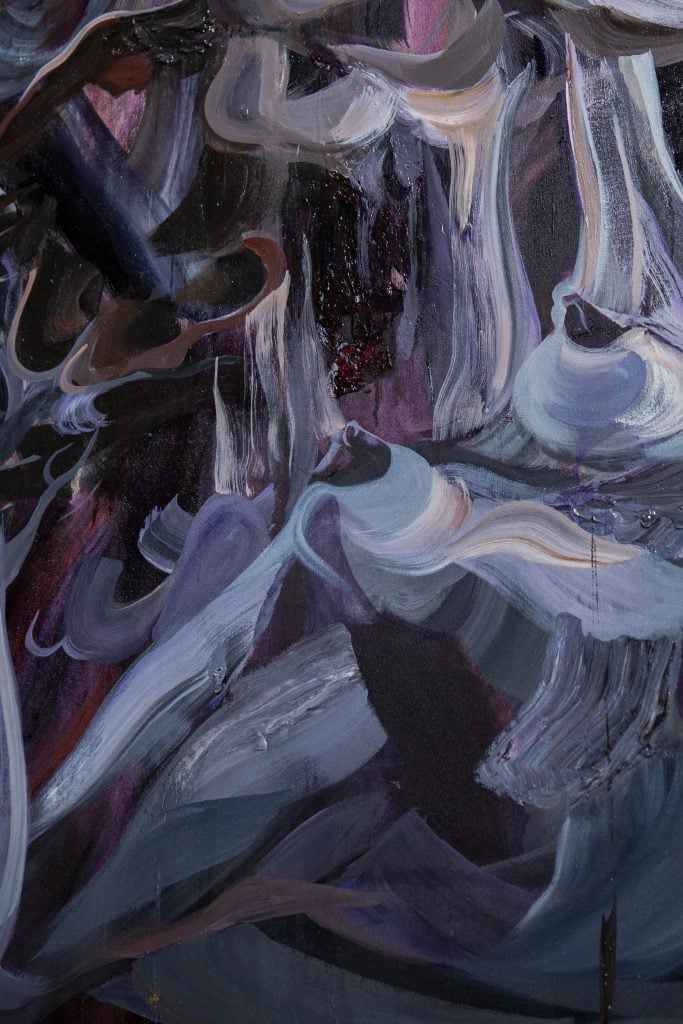
Detail of Wynnie Mynerva, Cambio (2024) from “Wynnie Mynerva: My Weaponised Body” at Gathering, London. Photo: Blythe Thea Williams. Courtesy of Gathering.
The exhibition evokes both a macro and micro view of the body. In some ways, the fleshy nature of the work easily conjures the feeling of being inside, as a minute specimen. But the viewer also looks upon human forms in the works that are smaller than themselves, as though gaining a view upon multiple bodies in a network together. There is a feeling of being both outside and inside; part of Minerva’s body and a force observing or potentially making a judgement of it.
“My Weaponised Body” calls for enduring physical and psychological connection. “Haraway draws a brilliant parallel: how to protect yourself from computer viruses,” the artist said. “The simplest answer is not to connect to unknown networks if you don’t want a virus. But I have loved, I love and I will love the unknown. Perhaps that is my greatest strength and my greatest weakness. HIV is the symptom of that connection. It is not a destiny that I have chosen, but an inscription that my body now carries with it.”
“Wynnie Mynerva: My Weaponised Body” is on view at Gathering, 5 Warwick Street, London, through November 9.